UPSC Daily Current Affairs: 6th November 2024 | Current Affairs & Hindu Analysis: Daily, Weekly & Monthly PDF Download
GS3/Environment
Gravity Energy Storage
Source: DTE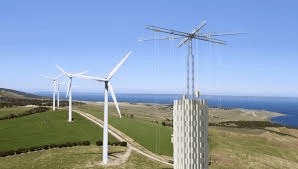
Why in News?
Gravity energy storage is gaining attention as a promising method to meet the challenges posed by solar and wind energy generation.
About Gravity Energy Storage:
- Gravity energy storage is an innovative technology that utilizes gravitational forces to store energy.
How it works?
- This system functions by lifting a substantial mass during periods of excess energy generation.
- When energy demand increases or when solar energy is not available, this mass is released to generate electricity.
- Common materials used for the weights include water, concrete blocks, or compressed earth blocks.
- In contrast to pumped-hydro energy storage, gravity energy storage provides greater flexibility in selecting locations for installations.
- Typically, the mechanism involves a heavy piston situated within a fluid-filled cylindrical container.
- When surplus solar energy is produced, this excess electricity lifts the piston, converting it into stored energy.
- When demand exceeds supply, the piston descends, pushing water through a turbine to generate electricity that meets the demand.
Advantages
- The system can operate for decades with minimal maintenance, unlike traditional batteries that tend to degrade over time.
- It eliminates harmful chemical reactions, which lessens environmental impacts and disposal challenges, crucial for advancing towards a sustainable future.
- Gravity energy storage can be more cost-effective for large-scale implementations, resulting in lower costs for both energy and storage.
- This technology is especially beneficial in regions where space is limited or where environmental considerations restrict the implementation of other storage solutions.
GS3/Science and Technology
What is the Visible Emission Line Coronagraph (VELC)?
Source:Indian Express
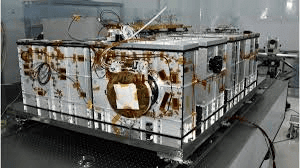
Why in News?
Scientists at the Indian Institute of Astrophysics (IIA) Bengaluru recently reported the “first significant” results from the Visible Emission Line Coronagraph (VELC) payload onboard the ADITYA-L1 Mission.
About Visible Emission Line Coronagraph (VELC):
- VELC serves as the primary payload for the Aditya-L1 Mission.
- This mission marks India's first effort to observe the Sun from a unique position approximately 1.5 million kilometers away from Earth.
- It is designed as an internally occulted solar coronagraph, allowing for:
- Simultaneous imaging
- Spectroscopy
- Spectro-polarimetry near the solar limb
- Developed by the Indian Institute of Astrophysics (IIA) at its CREST (Centre for Research and Education in Science and Technology) facility located in Hosakote, Karnataka.
- The VELC comprises:
- A coronagraph
- A spectrograph
- A polarimetry module
- Detectors and auxiliary optics
Purpose:
- The VELC's main objective is to observe the solar corona, which is the Sun's outermost atmospheric layer.
- It has the capability to image the solar corona down to 1.05 times the solar radius, achieving unprecedented proximity for such instruments.
- VELC will analyze various characteristics of the corona, including:
- Coronal temperature
- Plasma velocity
- Density
- Additionally, it will investigate phenomena such as Coronal Mass Ejections (CMEs) and the solar wind.
What is a Coronagraph?
- A coronagraph is a specialized instrument that blocks out the Sun's light, enabling researchers to study the Sun's corona, which is hot and tenuous.
- The coronagraph was invented in the 1930s by French astronomer Bernard Lyot.
- Typically, the Sun's corona can only be seen during a solar eclipse, when the moon's shadow obscures the bright central part of the Sun, revealing the dimmer corona.
- A coronagraph mimics this effect using a circular mask situated within a telescope to selectively block most of the Sun's light.
- This allows smaller, fainter features of the solar atmosphere and other celestial objects to be observed more clearly.
GS2/Polity
Not all private property is ‘material resource of community’ for redistribution: Unpacking the SC verdict
Source: Indian Express
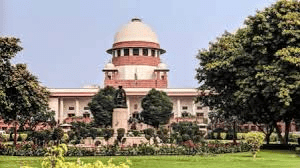
Why in News?
On November 5, a 9-judge Constitution Bench of the Supreme Court ruled that the government cannot acquire and redistribute all privately owned properties by labeling them as “material resources of the community” under Article 39(b) of the Constitution.
Criteria for Classifying Resources
- Purpose and Public Utility: Privately owned resources may qualify as community resources if they are essential for societal welfare, addressing collective needs, or fulfilling significant public purposes, such as energy, water, or land critical for infrastructure.
- Proportionality and Fairness: The court emphasized that any state action must be proportional, balancing public benefit with the impact on private owners.
- Economic Impact and Control: Resources that significantly affect the national economy or are crucial for maintaining societal equity (like natural resources) may be considered community resources, but this does not extend to general private property.
Impact on Property Rights
- This ruling reinforces individual property rights, clarifying that private property cannot be arbitrarily acquired under the guise of benefiting society. The state must substantiate the acquisition based on substantial, verifiable public welfare needs.
- Limitations on State Power: By rejecting an expansive interpretation of Article 39(b), the court limits state power, ensuring that only properties directly tied to public interest and welfare fall under this category.
Economic Implications
- Investment Climate: This ruling strengthens protections for private property, likely improving investor confidence by assuring that property rights are safeguarded from excessive state intervention.
- Economic Development and Social Equity: By narrowing the scope of Article 39(b), the ruling limits redistributive policies to sectors where public welfare is a clear priority, allowing economic resources to be distributed in a manner that considers social equity while respecting individual rights.
- Real Estate and Industrial Sectors: The ruling could positively impact sectors with high-value assets, such as real estate and industry, as businesses will have greater certainty regarding property ownership and security.
Future Legal Interpretations
- Refined Scope for Article 39(b) Applications: Future legislation under Article 39(b) must specifically justify how resources qualify as “material resources of the community,” likely limiting nationalization or acquisition to specific, strategically important sectors.
- Increased Judicial Scrutiny on Property Rights: Courts are likely to critically evaluate state actions aimed at redistributing private property, requiring robust evidence of public interest and alignment with constitutional principles.
- Potential for Policy Revisions: Laws invoking Article 39(b) and related provisions may need review to ensure compliance with this interpretation, leading to a more nuanced application of public welfare policies.
Way Forward
- Establish Clear Guidelines for Public Interest Acquisition: The government should define transparent criteria for categorizing “material resources of the community,” ensuring acquisitions serve substantial public welfare needs and align with societal priorities, especially in areas like infrastructure and essential services.
- Strengthen Judicial and Legislative Safeguards: Introduce legal safeguards to protect individual property rights, allowing courts to rigorously assess state actions on property acquisition, ensuring proportionality, fairness, and adherence to constitutional principles.
Mains PYQ: How did land reforms in some parts of the country help to improve the socio-economic conditions of marginal and small farmers? (UPSC IAS/2021)
GS2/Governance
Aadhaar biometric data access will aid forensics
Source:The Hindu

Why in news?
The Unique Identification Authority of India (UIDAI) maintains strict regulations regarding the disclosure of Aadhaar data to protect individual privacy and prevent potential misuse of personal information. Typically, law enforcement agencies are prohibited from accessing the demographic or biometric data stored within the Aadhaar database.
What are the legal limitations of using Aadhaar biometric data for forensic purposes?
- Stringent Privacy Protections: The Aadhaar Act imposes rigorous protections on personal data, particularly biometrics. Sections 29(1) and 33(1) restrict the sharing of core biometric data, such as fingerprints and iris scans, with any third parties, including law enforcement, except in very limited circumstances.
- Court Order Requirement: According to Section 33(1), demographic data can only be disclosed upon the order of a High Court or higher authority, while core biometric data remains strictly protected, which limits police investigations, especially in cases involving unidentified bodies.
- Forensic Investigative Gaps: Police databases mainly encompass individuals with criminal records, which hinders the identification of deceased persons through fingerprints. Without access to a comprehensive Aadhaar database, identifying unknown deceased individuals becomes increasingly difficult and time-consuming.
How can the balance between privacy rights and forensic needs be achieved?
- Right to Privacy vs. Right to Dignity: It is crucial to balance the fundamental right to privacy with the right to a dignified life and death, particularly when biometric data access could facilitate the identification of unknown bodies.
- Controlled Access Mechanisms: Introducing limited, case-specific access—requiring a judicial magistrate's order instead of a High Court order—could enable law enforcement to utilize Aadhaar biometrics in cases involving unidentified bodies, alleviating the burden on higher courts while preserving privacy safeguards.
- Transparent Oversight: Any system allowing the use of Aadhaar data for forensic purposes should incorporate stringent oversight mechanisms, including access logging and severe penalties for misuse, ensuring that data access is restricted to genuinely necessary cases.
What technological and procedural changes are necessary to facilitate the use of Aadhaar data in forensics?
- Advanced Identification Algorithms: Implementing algorithms akin to the U.S. Deceased Persons Identification (DPI) system could enhance the accuracy and efficiency of matching deceased individuals' fingerprints with larger databases.
- Digitization of Police Records: Converting state-level fingerprint databases into digital format would expedite cross-referencing and support forensic investigations, creating a more accessible identification system, even in the absence of Aadhaar.
- Secure Data Access Channels: Establishing secure and encrypted channels specifically for forensic usage, with restricted access, could protect the data while permitting controlled utilization.
- Specific Legislative Frameworks: New amendments are required to clarify the circumstances under which biometric data can be accessed for deceased individuals, distinguishing these situations from broader data privacy issues.
- Way forward:
- Amend Legal Framework for Controlled Access: There is a necessity to introduce specific legislative amendments that allow limited, case-specific access to Aadhaar biometrics for forensic purposes in cases involving unidentified deceased individuals, with rigorous judicial oversight to maintain privacy protections.
- Establish Secure Access Protocols and Oversight: It is essential to implement secure, encrypted access channels and enforce strict oversight mechanisms, including access logging and penalties for misuse, ensuring that biometric data is accessed only when absolutely necessary for forensic identification.
Mains PYQ: Discuss the merits of the concurrent operation of two government schemes: the Aadhaar card and the NPM, with one being voluntary and the other compulsory. Analyze the potential of these schemes to foster development benefits and equitable growth. (UPSC IAS/2014)
GS1/History & Culture
First Asian Buddhist Summit
Source: The Hindu

Why in news?
The Government of India, in partnership with the International Buddhist Confederation (IBC), organized the inaugural Asian Buddhist Summit (ABS) in New Delhi.
About the Asian Buddhist Summit (ABS)
- ABS serves as a prominent conference aimed at uniting Buddhist leaders, scholars, and practitioners from various parts of Asia.
- The central theme of the first summit was ‘Role of Buddha Dhamma in Strengthening Asia’.
- This theme aligns with India's Act East Policy, which seeks to enhance cultural and spiritual connections among Asian nations.
- Key discussions at the summit included:
- The impact of Buddhist art, architecture, and heritage.
- The dissemination of Buddha Dhamma and its cultural significance throughout Asia.
- The importance of holy Buddhist relics and their influence on society.
- The relevance of Buddhist philosophy and literature in the contemporary 21st century.
- The exploration of the relationship between Buddhism and scientific research, particularly in health and well-being.
About Buddhism:
- Origin of Buddhism
- Buddhism originated in India more than 2,600 years ago.
- Founded by Siddhartha Gautama (the Buddha) around 563 BCE.
- He was born into the royal Sakya clan in Lumbini, close to the Indo-Nepal border.
- At the age of 29, Gautama renounced his luxurious lifestyle to embrace asceticism.
- He attained enlightenment (Bodhi) after meditating for 49 days under a pipal tree in Bodhgaya, Bihar.
- His first sermon was delivered in Sarnath, known as Dharma-Chakra-Pravartana.
- He passed away at the age of 80 in Kushinagara (Mahaparinirvana) in 483 BCE.
- Tenets of Buddhism
- Advocated the Madhyam Marg (Middle Path) that balances indulgence and asceticism.
- Highlighted individual accountability for one's happiness.
- Four Noble Truths (ariya-sachchani):
- Dukkha: Suffering is an inherent part of life.
- Samudya: Every suffering has a cause.
- Nirodha: It is possible to extinguish suffering.
- Atthanga Magga: This can be achieved through the Eightfold Path.
- Eightfold Path (astangika marg):
- Right view, intention, speech, action, livelihood, mindfulness, effort, and concentration.
- The ultimate goal is to attain Nirvana (Nibbana).
- Five Precepts (Panchasil):
- Prohibitions against violence, stealing, sexual misconduct, lying, and intoxicants.
- Major Buddhist Texts
- Initially, teachings were passed down orally and memorized by the Sangha.
- These teachings were compiled into written form around 25 BCE in Pali.
- Three Pitakas:
- Vinaya Pitaka: Contains monastic rules.
- Sutta Pitaka: Holds the main teachings, divided into five Nikayas (Digha, Majjhima, Samyutta, Anguttara, Khuddaka).
- Abhidamma Pitaka: Provides philosophical analyses of the teachings.
- Other significant texts include:
- Divyavadana
- Dipavamsa
- Mahavamsa
- Milind Panha
- Role of the Buddhist Councils
- These councils were pivotal moments in early Buddhism, leading to sectarian divisions and the Great Schism.
- Four Major Councils:
- First Council (483 BCE): Presided over by Mahakasyapa, aimed at preserving the teachings.
- Second Council (383 BCE): Focused on addressing monastic discipline.
- Third Council (250 BCE): Conducted under Ashoka, aimed at propagating Buddhism.
- Fourth Council (72 CE): Resulted in the division between Mahayana and Hinayana Buddhism.
- Different Schools of Buddhism
- Mahayana:Known as the “Great Vehicle,” it emphasizes the Bodhisattva ideal and idol worship; it spread to Central and East Asia.
- Hinayana:Referred to as the “Lesser Vehicle,” it prioritizes individual salvation and adheres closely to original teachings; Theravada is a significant branch.
- Theravada:Closely aligns with the original teachings and is predominant in countries like Cambodia, Laos, Myanmar, Sri Lanka, and Thailand.
- Vajrayana:Known as the “Vehicle of the Thunderbolt,” it features complex rituals and emerged around 900 CE.
- Zen:Focuses on meditation and developed in China and Japan.
- Spread of Buddhism in Ancient India
- Monastic organizations played a crucial role in spreading teachings.
- Buddhism experienced rapid growth during the Buddha's lifetime.
- Emperor Ashoka significantly influenced Buddhism after the Kalinga conquest; he adopted peaceful propagation and dispatched missions to various regions, including Gandhara, Kashmir, Greece, Burma (Myanmar), and Egypt.
GS3/Economy
How Dedicated Freight Corridors are adding to GDP, boosting Rail revenues
Source: Indian Express
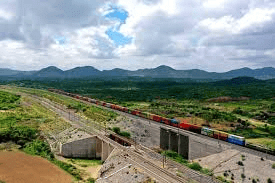
Why in news?
A recent study by the University of New South Wales has highlighted the significant economic effects of India's Dedicated Freight Corridors (DFCs) on the nation's GDP and the revenue generated by Indian Railways. The findings reveal that:
- Freight costs have decreased and travel times have been shortened due to the DFCs, resulting in a reduction of commodity prices by up to 0.5%.
- There has been a revenue increase of 2.94% for Indian Railways from FY 2018-19 to FY 2022-23, attributed to the DFCs.
- The analysis primarily focused on the Western Dedicated Freight Corridor (WDFC) for FY 2019-20, utilizing a Computable General Equilibrium model developed by the central government.
Dedicated Freight Corridors (DFCs) are specialized railway routes designed to enhance transportation capacity by facilitating quicker transit, utilizing double-stack container trains, and accommodating heavy-haul trains. This development is crucial for improving supply chains for industries situated in economic hubs and for increasing export-import activities.
- The Ministry of Railways initiated the DFC project in 2006, which involves the construction of two primary corridors:
- Eastern DFC (EDFC): This corridor extends 1,337 km from Sonnagar in Bihar to Sahnewal in Punjab. It is fully operational and includes feeder lines to coal mines and thermal power stations.
- Western DFC (WDFC): Spanning 1,506 km from Mumbai's Jawaharlal Nehru Port to Dadri in Uttar Pradesh, this corridor is currently 93% operational and services key ports in Gujarat, with a target for full completion by December 2025.
- As of March 31, 2024, an investment of Rs 94,091 crore has been made into the DFC project, excluding land acquisition costs.
Need
The establishment of Dedicated Freight Corridors (DFCs) was necessitated by two primary challenges:
- Overuse of the Golden Quadrilateral: This vital rail network, which connects Delhi, Mumbai, Chennai, and Howrah along with its diagonals, constitutes only 16% of the railway routes but handles over 52% of passenger traffic and 58% of freight traffic.
- Declining Rail Freight Share: To combat the diminishing share of freight traffic carried by the Railways, the National Rail Plan aims to increase rail's share of total freight to 45% by the year 2030.
The DFC initiative was first proposed in the Railway Budget for FY 2005-06. In 2006, then Prime Minister Manmohan Singh laid the foundation stones for both the Eastern and Western DFCs in Ludhiana and Mumbai, respectively. The Dedicated Freight Corridor Corporation of India Limited (DFCCIL) was formed in October 2006 as a Special Purpose Vehicle to oversee the construction, operation, and management of the corridors.
In March 2024, Prime Minister Modi inaugurated three new sections of the DFCs: the 135-km Makarpura-Sachin segment on the WDFC, and the 179-km Sahnewal-Pilkhani and 222-km Pilkhani-Khurja segments on the EDFC.
Current Status and Future Expansion of India’s Dedicated Freight Corridors (DFCs)
- Currently, approximately 325 freight trains operate daily on India's DFCs, indicating a 60% increase from the previous year.
- These freight trains are designed to be faster, heavier, and safer, contributing to more efficient goods transportation.
- Since the launch of the DFCs, they have successfully transported over 232 billion Gross Tonne Kilometres (GTKMs) and 122 billion Net Ton Kilometres (NTKMs) of freight.
- At present, DFCs are responsible for managing more than 10% of the freight traffic handled by Indian Railways.
- In addition to the existing corridors, four additional routes are proposed:
- East Coast Corridor: Connecting Kharagpur to Vijayawada (1,115 km).
- East-West Sub-Corridor-I: Linking Palghar to Dankuni (2,073 km).
- East-West Sub-Corridor-II: From Rajkharsawan to Andal (195 km).
- North-South Sub-Corridor: Stretching from Vijayawada to Itarsi (975 km).
GS2/Polity
Supreme Court Sets Boundaries on State Acquisition of Private Resources for Public Benefit
Source:Hindustan Times
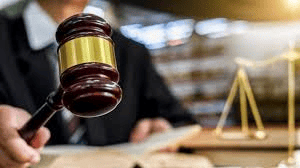
Why in News?
The Supreme Court, in a landmark ruling, established limits on the government’s power to take over privately owned resources for public distribution. This ruling, passed by an 8-1 majority of a nine-judge Constitution bench, clarified the scope of Article 39(b) of the Indian Constitution, which concerns the State’s responsibility to manage resources for the common good.
Constitutional Provisions Touched Upon by the SC in its Judgement Limiting State Acquisition of Private Resources:
- Article 14: Ensures equality before the law and equal protection of laws for all individuals in India, preventing discrimination and ensuring fairness.
- Article 19: Grants citizens certain fundamental freedoms, including speech, assembly, and movement, which can be reasonably restricted for public order and national interest.
- Article 31C: Protects laws implementing Articles 39(b) and 39(c) from being challenged based on Articles 14 and 19, creating a 'safe harbor' for laws that promote equitable resource distribution.
- Article 39(b): Directs the State to manage community resources in a manner that serves the common good, guiding policies aimed at reducing inequality.
- Article 39(c): Aims to prevent wealth concentration that negatively impacts common welfare, encouraging fair resource distribution.
Key Points of the SC Ruling Limiting State Acquisition of Private Resources:
- Defining "Material Resources of the Community": The Court specified that only certain private resources meeting specific criteria qualify as "material resources of the community" under Article 39(b) for state acquisition, depending on their nature, scarcity, and community impact.
- Balancing Public Welfare and Private Property Rights: The Chief Justice emphasized that while public welfare is crucial, it must be balanced with the rights of private property owners, rejecting previous broader interpretations of state power.
- Criteria for State Acquisition: The ruling established two criteria for resources to be considered "material resources": they must be significant and possess a community element, justifying state intervention in cases where they are scarce or essential.
The SC on Constitutional Safeguards for Privately Owned Resources:
- The ruling stressed that Article 39(b) should be read with Article 300A, which protects property rights, cautioning against using Article 39(b) as a blanket justification for property acquisition.
- Article 31C provides immunity for laws aimed at public welfare under Articles 39(b) and (c), protecting them from challenges if they genuinely promote public welfare objectives.
Dissenting Views and Historical Context of Limiting State Acquisition of Private Resources:
- Historical Context: In 1977, Justice VR Krishna Iyer suggested that all private property could qualify for redistribution. This was followed by a broad interpretation of state power in the 1982 Sanjeev Coke case, which the recent ruling has overturned.
- Dissenting Views: Justice Sudhanshu Dhulia’s dissent argued that defining "material resources" should be the legislature's responsibility. Justice Nagarathna contended that past interpretations reflecting public welfare priorities post-Independence should not be overlooked.
Broader Implications of the SC Ruling Limiting State Acquisition of Private Resources:
- The ruling originated from a dispute involving MHADA, which acquired buildings for redevelopment. Property owners challenged the acquisition, marking a significant interpretation of limits on state power.
- This decision reinforces a framework that respects both individual and collective interests, providing constitutional clarity for future cases regarding state acquisition of private resources.
- The Court's ruling requires each state acquisition of private resources to align with Article 39(b) and genuinely benefit the community.
GS2/Polity
 |
Download the notes
UPSC Daily Current Affairs: 6th November 2024
|
Download as PDF |
Central Water Commission (CWC)
Source:MSN
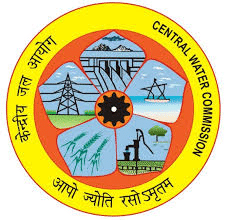
Why in News?
Recent reports from the Central Water Commission (CWC) highlight the rapid expansion of glacial lakes in the Himalayan region, which has significant implications for local communities and ecosystems. The findings indicate that these lakes are growing at an alarming rate, thereby increasing the risk of glacial lake outburst floods (GLOFs).
- Rapid Expansion of Glacial Lakes: The surface area of glacial lakes across the Himalayan region has increased by 10.81% from 2011 to 2024. Specifically, in India, these lakes have expanded by 33.7% during the same timeframe, posing serious threats to nearby communities and natural systems.
- High-Risk Lakes: The CWC report identifies 67 lakes in India that have experienced a size increase of over 40%, categorizing them as high-risk for potential GLOFs.
- Regional Expansion Trends: The total surface area of glacial lakes in the Himalayas rose from 533,401 hectares in 2011 to 591,108 hectares in 2024. This growth is primarily attributed to accelerated glacier melting caused by rising temperatures.
- Advanced Monitoring: The CWC is utilizing modern satellite technologies, such as Sentinel-1 SAR and Sentinel-2 multispectral imagery, to conduct precise, year-round monitoring of lake sizes and assess the risks of potential outbursts.
About Central Water Commission (CWC)
- Establishment: The CWC was established in 1945 as the Central Waterways, Irrigation and Navigation Commission (CWINC), based on the recommendations of Dr. B. R. Ambedkar, who was part of the then Viceroy's Executive Council.
- Nodal Ministry: It operates under the Ministry of Jal Shakti, specifically in the Department of Water Resources, River Development and Ganga Rejuvenation.
- Status: The CWC functions as a statutory body, providing advisory support to the Government of India on issues related to water resource development and management.
- Headquarters: Its headquarters are located in New Delhi.
- General Responsibilities: The CWC initiates, coordinates, and promotes initiatives for the control, conservation, and utilization of water resources. It also compiles and maintains the National Register of Large Dams (NRLD) and conducts hydrological surveys.
- Scope of Work: The CWC focuses solely on surface water management, whereas groundwater resources are managed by the Central Groundwater Board (CGWB).
- Chairman: The Chairman of the CWC also serves as the Ex-Officio Secretary to the Government of India.
- Wings of CWC:The CWC comprises several wings, including:
- Designs and Research (D&R) Wing
- River Management (RM) Wing
- Water Planning and Projects (WP&P) Wing
GS3/Science and Technology
Does the Sun rotate?
Source: Money Control
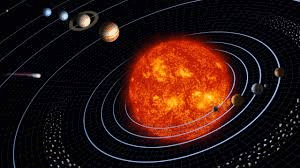
Why in news?
Indian astronomers at the Kodaikanal Solar Observatory (KSO) have made a significant breakthrough by mapping the variation in the Sun's rotation speed for the first time, revealing differences from the equator to the poles.
Sun’s Rotation: Key Facts
- The Sun does not rotate as a solid object; it exhibits differential rotation, where different parts rotate at different speeds.
- Rotation speed varies with latitude, being faster near the equator and slower toward the poles.
- This variation is influenced by the Sun’s composition of gaseous plasma rather than solid material.
Rotation Period Variation by Latitude
- Equatorial Regions: The fastest rotation period, approximately 24.47 days (sidereal rotation).
- Sunspot Zones: At about 16 degrees latitude, the rotation slows slightly to about 27.3 days.
- Higher Latitudes: At 75 degrees latitude, the rotation period extends to around 33.4 days.
- Poles: The slowest rotation occurs at the poles, taking approximately 31.1 days.
Sidereal vs. Synodic Rotation Periods
- Sidereal Rotation Period: The duration for the Sun to complete one full rotation relative to distant stars, varying from 24.47 days at the equator to around 33.4 days at higher latitudes.
- Synodic Rotation Period: The time taken for a fixed feature on the Sun to return to the same position as seen from Earth, averaging about 26.24 days, which is longer than the sidereal period due to Earth’s orbit around the Sun.
Why Differential Rotation Occurs
- Gaseous Plasma Composition: The Sun's composition of plasma—an ionized, hot state of matter—allows different regions to rotate at varying speeds.
- Convective Zone Dynamics: The outer convective layer contributes to differential rotation, as plasma circulates, rising and sinking, affecting rotational speeds at various latitudes.
- Scientific Implications
- Solar Dynamo Theory: The Sun’s differential rotation is crucial to understanding the solar dynamo, the mechanism that produces the Sun's magnetic field.
Mystery of Differential Rotation: Despite extensive research, the precise mechanism behind the Sun's differential rotation remains a significant area of study in solar physics.
GS2/Governance
A law that enables vigilante violence
Source:The Hindu

Why in news?
On July 30, Uttar Pradesh strengthened its 2021 anti-conversion law, raising the maximum penalty to life imprisonment, tightening bail criteria, and broadening the definition of “illegal conversion” to encompass promises of marriage and trafficking.
How do current laws facilitate vigilante actions under the guise of protecting societal values?
- Expansion of Complainant Scope: The revised law permits any individual, irrespective of personal involvement or direct impact, to file complaints regarding alleged unlawful conversions.
- Broad Interpretation of “Public Interest”: The law allows police officers and unrelated third parties to file FIRs, which can be misused to target religious minorities or interfaith couples, portraying these cases as threats to society.
- Legal Ambiguity and Arbitrary Application: Different courts have inconsistently interpreted the term “aggrieved person,” creating uncertainty that enables authorities and vigilantes to selectively target individuals and groups, often without substantial evidence, infringing upon personal freedoms and due process.
- Reduced Threshold for Evidence: The law expands the definition of “illegal conversion” to include vague phrases like “promise of marriage,” making it susceptible to manipulation. This enables complaints based on mere assumptions rather than verified instances of coercive conversion.
What measures can be implemented to ensure effective enforcement of laws against mob violence and vigilantism?
- Strict Definitions and Limits on Complainants: Limiting who can file complaints to genuinely aggrieved individuals or close relatives could minimize misuse by third-party vigilante actors.
- Accountability Mechanisms for Law Enforcement: Police officers who file baseless FIRs motivated by ideology should face disciplinary actions. Implementing judicial oversight for misuse cases would deter officers from pursuing unfounded complaints.
- Enhanced Legal Protections for Victims of Vigilantism: Establishing a dedicated body to investigate and prosecute mob violence and vigilante actions can safeguard targeted communities.
- Promotion of Public Awareness and Legal Literacy: Initiatives aimed at educating citizens about their rights and legal processes can empower them to resist unlawful actions perpetrated by vigilantes.
What role do societal perception and political influence play in the rise of vigilantism?
- Ideological Justifications for Vigilantism: Laws such as the anti-conversion amendment are often presented as protective measures for cultural or religious values, fostering a narrative that legitimizes vigilante actions as morally acceptable.
- Political Endorsement and Implicit Encouragement: When political figures endorse these laws or support vigilante activities, they create a permissive atmosphere for such behavior.
- Media Influence and Public Perception: The portrayal of interfaith relationships or religious conversions as threats to social harmony often encourages public backing for vigilante actions. Sensationalist media narratives heighten the perception of certain groups as “others,” justifying vigilante behavior as social correction.
- Inadequate Legal Deterrence: Weak penalties for mob violence or leniency in prosecuting vigilantes reinforce the notion that such actions will be tolerated, especially if they align with popular or politically supported views.
Way forward:
- Enact Clearer Legal Boundaries and Protections: Set strict limits on who can file complaints under anti-conversion laws, ensuring only directly affected individuals or close family members can do so.
- Strengthen Public Awareness and Judicial Oversight: Launch legal literacy campaigns to inform citizens about their rights and the risks of vigilante actions, and implement judicial oversight for cases involving mob violence and vigilantism to ensure accountability and protection for targeted groups.
GS3/Defence & Security
What is Minuteman III Missile?
Source:NDTV
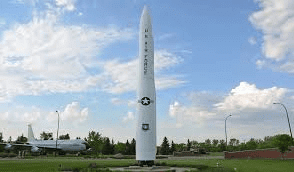
Why in News?
The US Army is set to conduct a test launch of a Minuteman III hypersonic nuclear missile shortly after polling concludes on Election Day.
About Minuteman III Missile:
- The LGM-30G Minuteman III is classified as an American Intercontinental Ballistic Missile (ICBM).
- The designation "L" indicates it is a silo-launched missile, "G" denotes it is used for ground attacks, and "M" stands for guided missile.
- This missile system became operational in the early 1970s.
- It serves as the only land-based component of the United States' nuclear triad.
- Designed and manufactured by Boeing, it was initially intended for a service life of about ten years.
- However, it has undergone modernization, with its successor, the Ground-Based Strategic Deterrent (GBSD), not expected to enter service until 2029.
- The Minuteman III was the first U.S. missile to be equipped with Multiple Independently Targetable Re-entry Vehicles (MIRVs).
- Currently, the United States maintains an inventory of approximately 440 Minuteman III missiles.
Features:
- The missile comprises three stages and utilizes solid fuel.
- It has a length of 18.2 meters, a diameter of 1.85 meters, and a launch weight of 34,467 kilograms.
- Its speed reaches around 15,000 mph (Mach 23 or 24,000 kph) at burnout, categorizing it as hypersonic.
- The Minuteman III has a maximum operational range of 13,000 kilometers.
- It is designed to carry a payload of three re-entry vehicles but currently operates with a single nuclear warhead due to arms control accords with Russia.
- The missiles are strategically dispersed in reinforced silos and linked to an underground launch control center via a network of hardened cables.
- It features a rapid launch capability, boasts nearly 100 percent reliability in testing, and includes backup airborne launch controllers to ensure the preservation of retaliatory capabilities.
GS3/Science and Technology
Key Facts about Vitamin D
Source:WHO
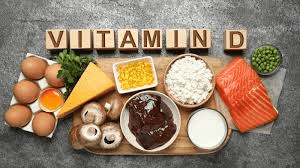
Why in News?
Scientists have discovered significant information regarding Vitamin D deficiency during early life, which can lead to issues with the immune system.
About Vitamin D:
- Vitamin D, also known as calciferol, is a fat-soluble vitamin.
- It occurs naturally in certain foods, is added to others, and is available as a dietary supplement.
- The body can synthesize vitamin D when ultraviolet (UV) rays from sunlight penetrate the skin.
- During sunny periods, vitamin D is stored in body fat and released when sunlight is not present.
- Natural food sources of vitamin D include egg yolks, saltwater fish, and liver.
Why is Vitamin D Important?
- Vitamin D facilitates the absorption of calcium and helps maintain proper levels of calcium and phosphorus in the bloodstream.
- These minerals are essential for the development and maintenance of strong bones and teeth.
- A deficiency in vitamin D can result in bones becoming thin, brittle, or deformed.
- Additionally, vitamin D contributes to the proper functioning of the nervous system, musculoskeletal system, and immune system.
Vitamin D Deficiency:
- A lack of vitamin D can lead to serious bone diseases, including osteoporosis and rickets.
- Osteoporosis is characterized by weakened bones that are more prone to fractures.
- Chronic or severe vitamin D deficiency can result in decreased absorption of calcium and phosphorus in the intestines, leading to hypocalcemia (low calcium levels in the blood).
- This condition can trigger secondary hyperparathyroidism, where the parathyroid glands become overactive in an attempt to maintain normal calcium levels in the blood.
- Severe cases of hypocalcemia and hyperparathyroidism may cause symptoms such as muscle weakness, cramps, fatigue, and depression.
|
39 videos|4544 docs|971 tests
|






























